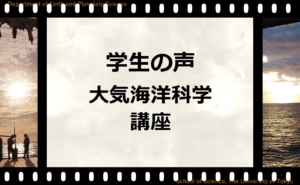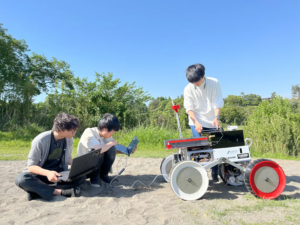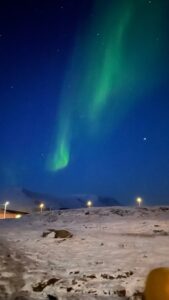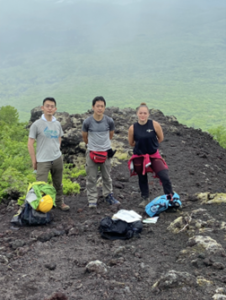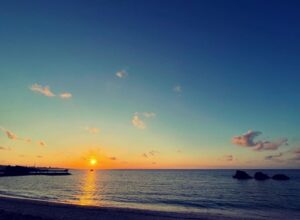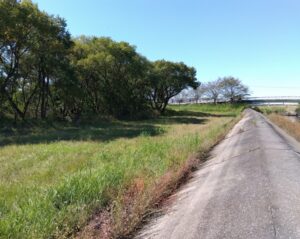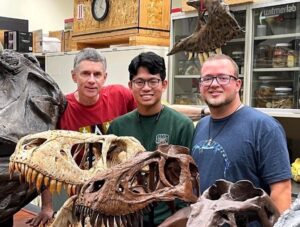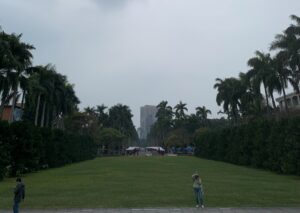【学生の声2019】Student’s Voices – as a Foreign Student
2019年度「学生の声」
Ta-Wei Chang(固体地球科学講座 博士2年)
1.Opening
Welcome to my story! You are now coming across words from a 2nd year Ph. D course student majoring in the study of earthquakes. As a foreign student, I will provide you with stories of why I chose to pursue into this field, why choosing Japan and UTokyo, how life is in and out of campus, and an overview of my research.
2.Why Here?
I chose to pursue in the field of Earth and Planetary Sciences simply because it is fascinating. We could study about the formation of planets, effects of climate change, prediction of tsunami waves, and everything else related to our planet Earth. Among which, the study group that attract me the most is the solid earth group, which focuses on earthquakes, volcanoes, tsunamis, structures and compositions of the Earth, and many others, which in addition to fulfilling our thirst of knowledge, have direct and profound impact on our daily lives. What made me pin down to seismology, or the study of earthquakes, however, is the Meinong Earthquake I have felt during my final year in undergraduate school in Taiwan, which lead to unproportioned casualties despite its rather small magnitude. I believe that by digging deeper into the mechanisms of earthquakes, there must be something I can contribute to the science community and thus the human beings. With this belief in mind, I made the decision to pursue my study in Seismology, beginning from Masters and extending into Ph. D course where I now belong to.
The question now is where to pursue the degree. Among popular destinations such as the US, Japan may not appear to be the most obvious choice for many. However, there are several advantages of pursuing a degree in Japan, including lighter financial pressure (tuition 1/3 of that of public University in US for example, and availability of generous scholarship from Japanese government), outstanding academic performance in many study fields that include my targeting field, and many others such as safety, wealth of culture, etc. Amongst Japan, I decided on Univ. Tokyo because of its obvious reputation in Japan and the extensive coverage of faculty members specializing in the field I am interested in. In addition, I have participated in the UTRIP program during my 3rd year in undergraduate, a 1.5-month research internship program for undergraduate student held by School of Science in University of Tokyo. During the program, I participated in studies under rigorous supervision of my current supervisor, and am awed by abundance of resources University of Tokyo can provide, including the support from the lab, supervision of Professors, assistance from the international office staff, abundance in funding, etc. With these, I made my way to my current position.
3.My Study:
From my Masters and extending to Ph. D course, I have been studying about the relationship between giant, hazardous earthquakes, and their aftershocks. We can imagine earthquakes as sudden releases of energy that is accumulated on a fault that separates two rock bodies. It is instinctive to think that if the fault stops moving after an earthquake, the energy stored on the fault may have been released more fully, whereas if the fault kept moving between each other after the earthquake, we may interpret that the energy may not have been released fully. In more scientific phrases, if there is less aftershocks occurring on the region that is ruptured during mainshock, we could infer higher energy release in those ruptured regions. On the other hand, aftershocks within those ruptured regions indicate some energy not released during mainshocks. It is important to understand the situations on the fault, for it may yield information of the upcoming earthquakes on the fault.
To discuss this issue, we need two pieces of information: the location of the ruptured regions during mainshocks, together with the locations of the aftershocks. In the past few decades, we have seen numerous studies trying to better determine both features more accurately, as well as putting them together and discuss their relative locations. A problem commonly surfaces during the comparison: bias between two features. Imagine that we want to overlay two maps plotted on transparent films. Even if both maps are accurate, the overlay only works if the location matches perfectly, or we will not make a valid direct comparison. If we apply the very same idea to mainshocks and their aftershocks, to make a valid overlay of the location of the mainshock rupture area with its aftershocks, we need to minimize the bias between the two features.
This is where my team’s research comes into play. By matching and comparing seismic waveforms generated by the earthquakes that are observed around the world, we first re-determine the locations of aftershocks that ruptures in similar manners as the mainshocks. We then compare the seismic waveforms between the mainshocks and the aftershocks, inferring the rupture region by essentially “counting the number of aftershocks existing within rupture process of mainshocks”, or using them as empirical Green’s functions. This way, we are able to reduce the potential bias when comparing the two sets of locations. We believe that this study may benefit the scientific community by providing a new approach to refine this commonly-made comparison.
4.Life:
Studying in Univ. Tokyo is very rewardable. There are a variety of courses to choose from (English on request!), and supervisors are generally supportive of their students in their own ways, academically or daily life. As one key piece of puzzle of research is to introduce one’s work to others and exchange ideas for improvement, we have chances to participate in several meetings in a year, some even abroad. The idea is straightforward: in undergraduate, we learn from textbooks; at graduate schools, we begin to look for answers for unsolved questions, and share what we have found with others. Through challenges and exchanges of ideas, everyone learns, and so Science advances.
Life in Japan is very enjoyable, as it is diverse enough for everyone to find their favorite ways of life. At the beginning, it can be a little tricky without Japanese knowledge, which I managed with lots of help from people around me. University of Tokyo provide us with Japanese course ranging all levels, which with time and some work, I believe everyone will be able to manage levels that makes their lives comfortable in Japan. Lab members will likely be one of your first friends, who you will get to know much better after a few dinner parties (Nomikai!) together. One benefit of studying Earth Sciences is that there are lots of chances to visit all kind of places. The photos below on the left is a volcanic bomb around Mt. Fuji during a field trip, and the one on the right is taken on Mt. Kumotori in a weekend hiking with lab members, with Mt. Fuji in the background!
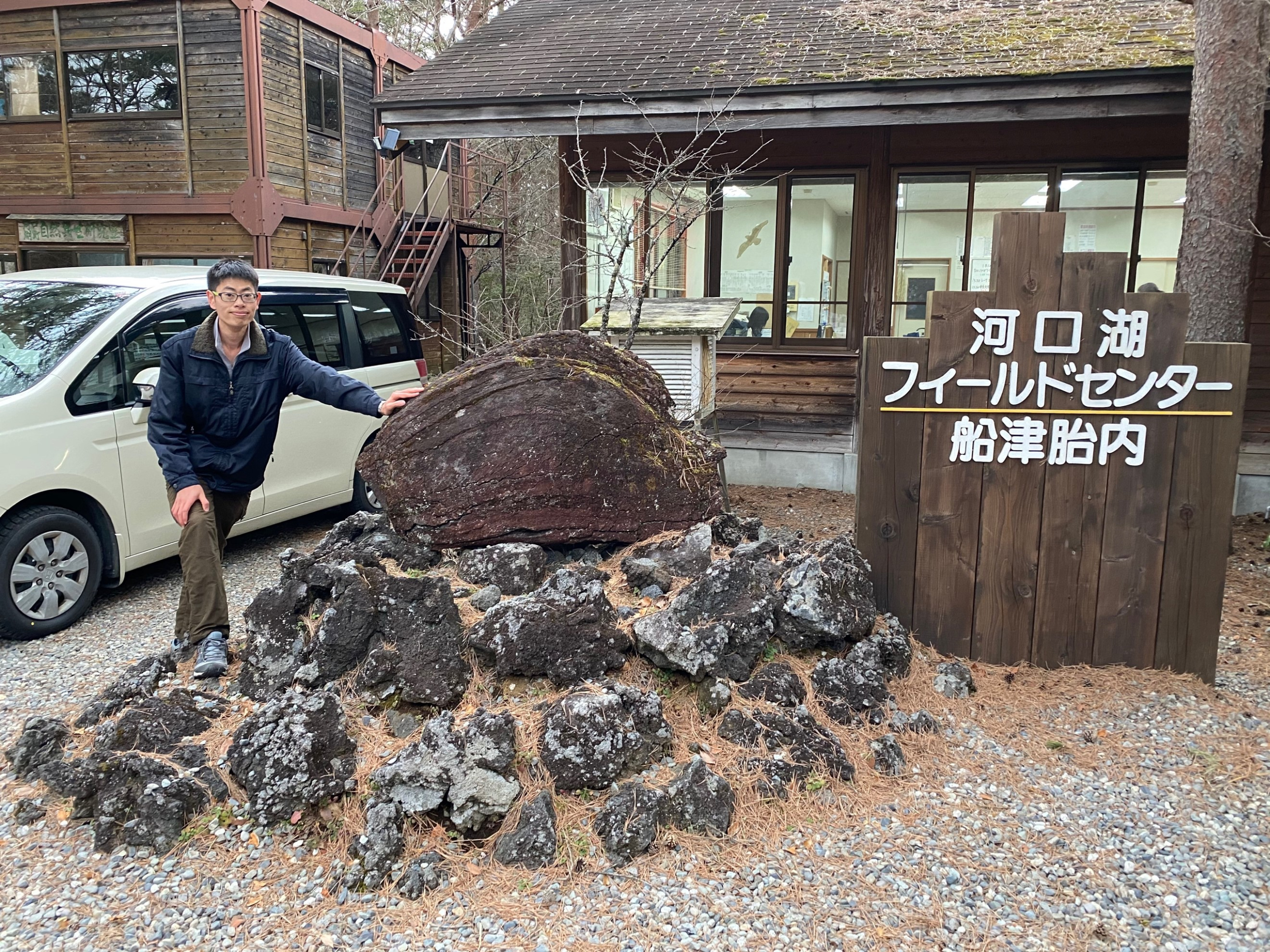
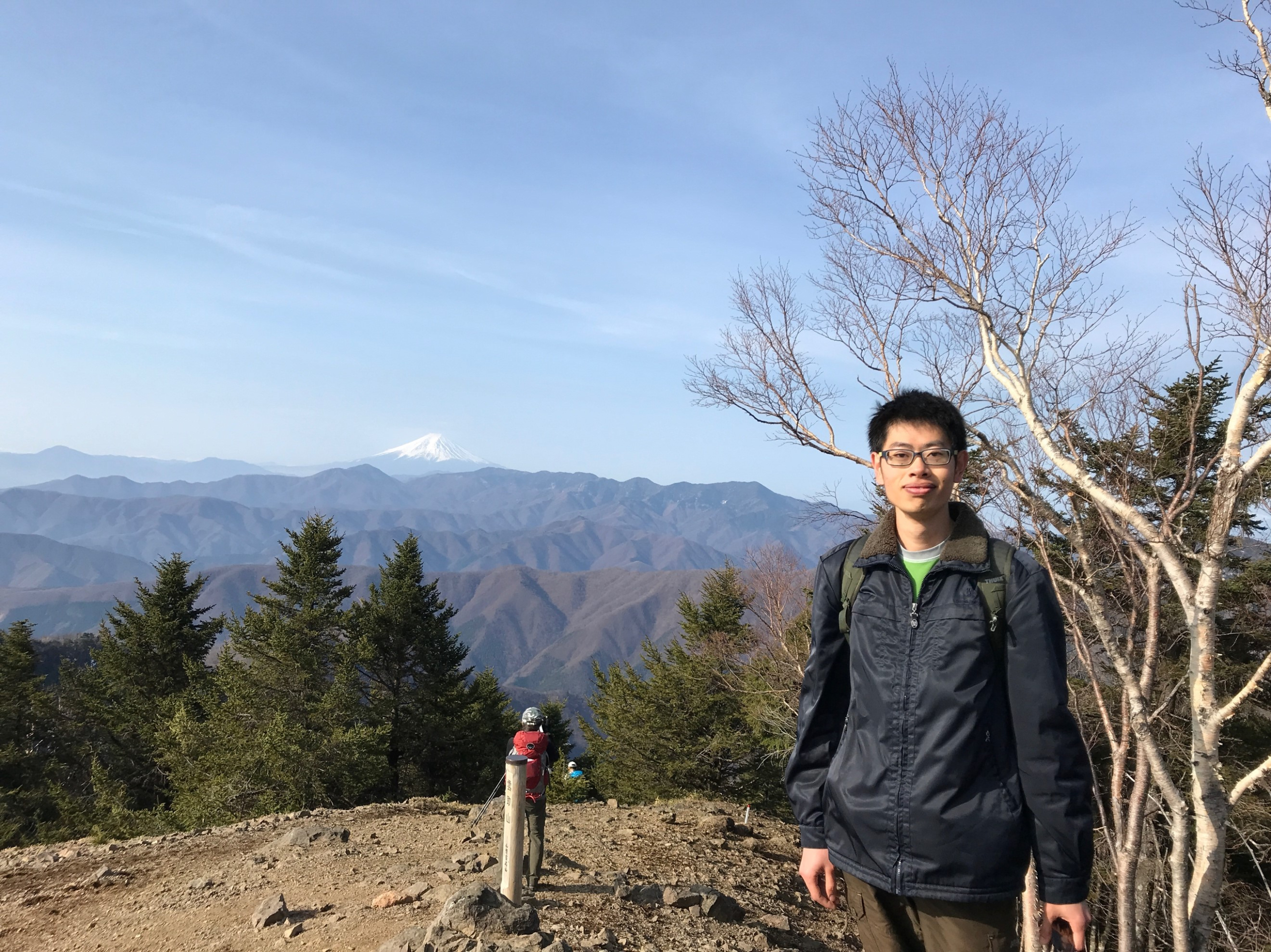
5.Wrapping up:
If this long article doesn’t scare you away, then welcome to give us a try! If there are any faculty members familiar with topics you feel interested in, feel free to contact them and ask for opportunities. Whether you wish to explore the unknowns in Nature or want to contribute to the society through advancement in understanding of natural hazards, I am sure you will find the department a good place to start. Good luck!
Ta-Wei Chang(固体地球科学講座 博士2年)
[2020.03公開/2019年度「学生の声」]

